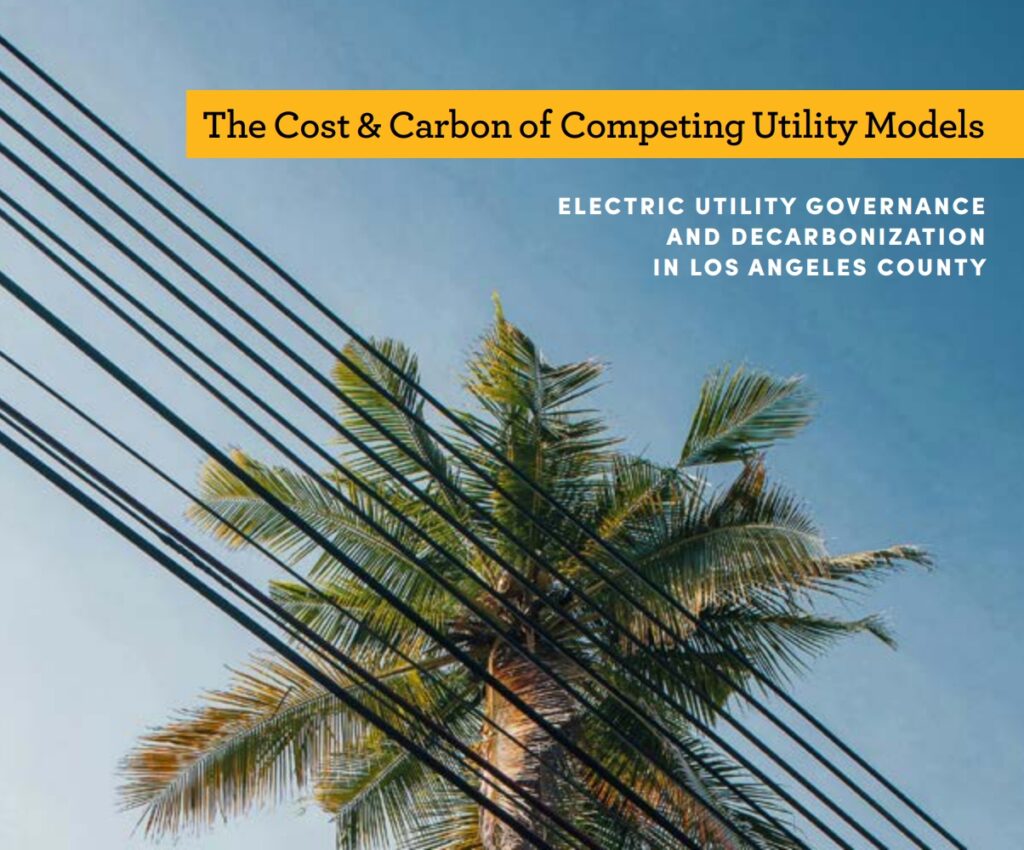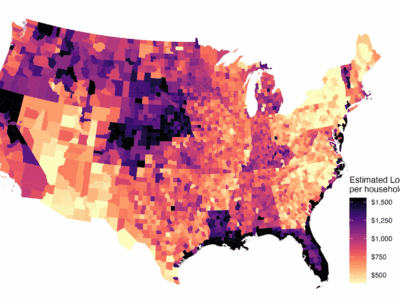Which is Better: LADWP or SCE?
New UCLA Law report, “The Cost & Carbon of Competing Utility Models,” contrasts municipally owned electric utilities and investor-owned utilities.

One of our three main areas of focus at the Emmett Clean Energy Law & Leadership (E-CELL) initiative is Ownership of Energy Resources: exploring how utility ownership structures affect cost, climate, and other outcomes. In June, we released a Pritzker Brief on this topic co-authored by our recent legal fellow, Ruthie Lazenby, as well as Mohit Chhabra of NRDC and Sylvie Ashford of TURN. That paper explored the theoretical underpinnings differentiating between publicly-owned utilities (POUs) and investor-owned utilities (IOUs) on the issues of affordability, clean energy, and reliability.
Today, we’re releasing another report on this topic, delving more deeply into a case study comparing cost and climate metrics between one POU—the Los Angeles Department of Water and Power (LADWP)—with one IOU—Southern California Edison (SCE)—who both operate in the same geographic region—Los Angeles County. (Full report here.)
Los Angeles County offers a unique opportunity to compare a POU and an IOU that operate in the same region with similar building types, similar state policy goals, and generally similar climates. With the geographic overlap between these two utilities, distinctions between them may be more likely attributable to the different governance models.
Our analysis finds that while the investor-owned SCE consistently outperformed municipal LADWP on climate metrics from 2016 to 2019, since 2020, LADWP has gained ground on this front. Since 2020, LADWP has exceeded SCE on percentage of Renewable Portfolio Standard (RPS)-eligible generation. Meanwhile, SCE continues to outperform LADWP in terms of carbon intensity of its overall generation mix, though LADWP has gained substantial ground and even outperformed SCE in select years.
On the consumer cost front, LADWP residential electricity rates continue to be cheaper than SCE’s residential rates, but the gap has narrowed in recent years. While rates vary depending on how much electricity is used and when, SCE’s average residential rate is 35.3 cents per kWh (or 33.3 cents per kWh accounting for the climate credit rebate), while LADWP’s average residential rate ranges from 22 to 37 cents per kWh (with the rate for the moderate use Tier 2 at 28.6 cents per kWh). Compare this to two years ago, when SCE’s average residential rate was 33.2 cents per kWh, while LADWP’s was 19.4 cents per kWh.
A likely contributor to the narrowing of the gap between SCE & LADWP rates is historical LADWP underspending, with recent increases. Studies of LADWP spending in the mid-2010s found that the utility had underspent on capital investments and system reliability. LADWP has since ramped up its capital spending (including both general grid infrastructure and clean energy resources), which has, in turn, driven rates higher.
Overall, LADWP and SCE appear to be converging on both climate and cost outcomes. The findings suggest that both utilities are making progress toward state clean energy targets, and the gap between their rates has decreased as LADWP has increased spending. While the utility governance model does affect how resources are allocated and spending is prioritized, SCE and LADWP are currently performing relatively similarly on clean energy procurement and cost of service. This convergence suggests that both types of utility models can work to achieve clean energy goals, though diligent cost containment will be necessary to reduce cost impacts to both sets of ratepayers.
This paper draws heavily on an earlier analysis entitled Greening the Los Angeles Power Grid: Public Utility Models and Decarbonization in Los Angeles County by William Boyd, Ann E. Carlson, Benjamin A. Harris, Andria So, Julia E. Stein, and Samantha Zurcher, which was by UCLA’s Sustainable LA Grand Challenge. Read the new report here.







Very interesting, thanks!
I feel lucky that we have lovely smart people who study this. I have a feeling this doesn’t happen everywhere.
When doing a comparison of relative costs of service between LADWP and SCE, it’s important to recognize and correct for the fact that SCE pays property taxes and corporate income taxes, while LADWP does not.